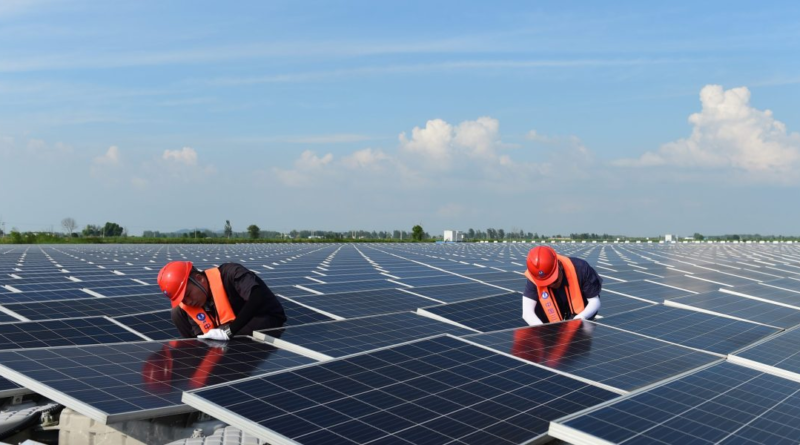Renewables and nuclear can handle almost all new electricity demand in the next few years
Russia’s invasion of Ukraine in February and a global energy crisis sparked fears that clean energy and net-zero emission targets were being scrapped in the name of energy security. But as it turns out, the spike in fossil fuel use was just a blip, as the next few years are set to see low-carbon energy sources generate a record share of the world’s electricity.
After stalling in 2022 due to high prices and economic slowdowns, global electricity consumption is expected to return to growth in the coming years, increasing 3% faster than 2022 levels each year between now and 2025, according to a report by the International Energy Agency released Wednesday.
But even though consumption is rising, the energy transition isn’t losing a beat as fossil fuel use is expected to decline while renewable energy sources and nuclear power will fill more than 90% of the new demand. Clean energy sources including wind and solar are now expected to account for 35% of global power generation in 2025, up from 29% last year. Nuclear power, meanwhile, is set to grow nearly 4% annually between now and 2025.
The rise in global electricity demand over the next three years will be double the current electricity consumption of Japan, IEA Executive Director Fatih Birol said in a statement.
“The good news is that renewables and nuclear power are growing quickly enough to meet almost all this additional appetite, suggesting we are close to a tipping point for power sector emissions,” he said.
But even as countries in Europe and the Americas accelerate replacing power plants reliant on fossil fuels with renewable energy sources, it doesn’t mean the rest of the world is moving at the same pace. The IEA warned that countries with the fastest-growing economies and population sizes are still lagging far behind.
The energy transition is gathering steam
For a while last year, many people worried the war in Ukraine had irreparably delayed the world’s energy transition plans to mitigate the worst effects of climate change.
The invasion sparked a global natural gas supply crunch and threatened an energy crisis in many countries worldwide. Europe in particular was on red alert last year as natural gas supplies from Russia dried up, nuclear power plants remained idle for maintenance, and hot temperatures cut into hydropower’s ability to make up the difference.
The crisis led to record-high coal use on the continent in 2022, as Germany, the U.K., France and others reopened coal-fired power plants to beef up domestic energy production. Last March, UN Secretary General António Guterres warned the world’s more ambitious climate targets were on “life support” as the war risked derailing energy transition plans.
But warm winter temperatures and manageable energy demand ended up softening the blow, and Europe looks to be muddling through the energy crisis this year. With a renewed appreciation for the dangers of relying on external powers for energy, the EU announced a clean energy investment plan in May worth €210 billion ($225 billion) between 2022 and 2027. In the U.S., meanwhile, last year’s Inflation Reduction Act set aside $369 billion in climate and energy spending in the form of investments and tax exemptions.
Latef last year, the conversation over the Ukraine War’s consequences for the energy transition began to shift, and the IEA predicted in October that the drop in Russian fossil fuel exports and the increased investment in renewable power would expedite changes in most of the world.
“Energy markets and policies have changed as a result of Russia’s invasion of Ukraine, not just for the time being, but for decades to come,” Birol said at the time.
The energy outliers
But while the war has expedited renewable energy’s ramp-up in many countries, some outliers still reliant on fossil fuels remain. The bad news is that these outliers are set to be some of the world’s biggest economies for years to come.
Asia will account for half of the world’s electricity demand by 2025, according to the IEA, and more than 70% of the growth in demand over the next three years is set to come from China, India, and Southeast Asia. All three of those regions are lagging behind Europe and the Americas when it comes to renewable energy displacing fossil fuels.
Electricity demand in China alone is set to exceed consumption in Europe, India, and the U.S. combined, accounting for one third of global use in 2025. China’s huge energy demand means that despite generating more renewable energy than any other nation, it still posted record-high output from coal and gas last year and has announced plans to increase coal production through 2025 to increase energy security.
Electricity generation from fossil fuels is set to plateau between now and 2025, according to the IEA, as reductions in coal and gas use in the West will be offset by ramp-ups in Asia and the Middle East. With China’s energy usage set to bounce back from a COVID-induced low last year, the direction its energy market takes will play a critical role in the energy transition.
“Developments in China, where more than half of the world’s coal-fired generation occurs, will remain a key factor,” the IEA said.
Learn how to navigate and strengthen trust in your business with The Trust Factor, a weekly newsletter examining what leaders need to succeed. Sign up here.


